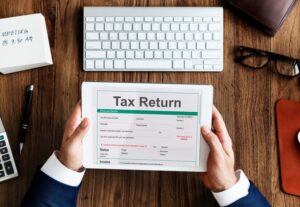How to Reply to a Demand Notice: DRC 06 in GST?
- 23 Dec 24
- 9 mins
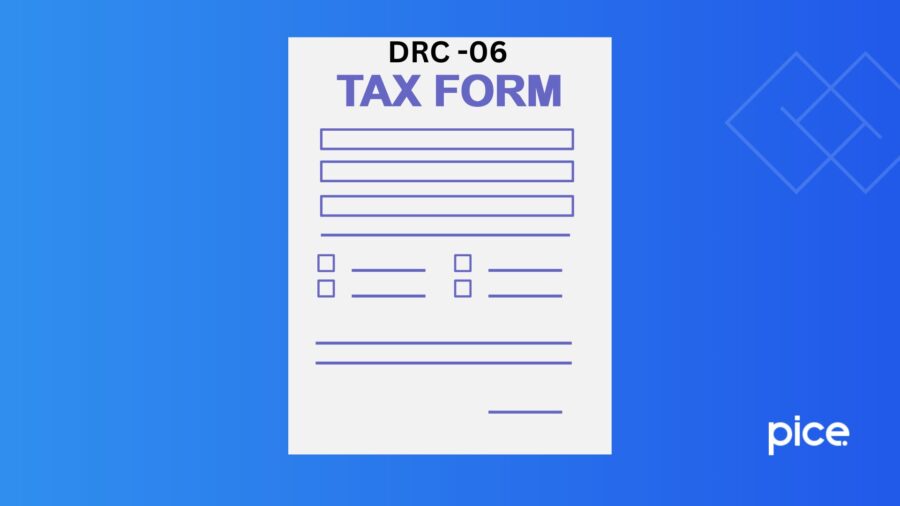
How to Reply to a Demand Notice: DRC 06 in GST?
- Overview of the Process of Adjudication
- Time Limit for Adjudicating the Case Under Sections 73 and 74
- How to View a Notice on the Official GST Portal?
- How to Reply to a DRC-06 Notice on the GST Portal?
- How to View an Order Issued by a Tax Official?
- What Are the Reasons for Initiating Adjudication Proceedings Under Sections 73 and 74?
- Conclusion
Key Takeaways
- Respond to GST notices in Form DRC-06 within 30 days to avoid escalation.
- Attach valid supporting documents to substantiate your reply to the tax officer.
- Use the GST portal to view notices, reply, and track updates seamlessly.
- Early resolution of discrepancies helps reduce penalties and expedite closure.
- Proper compliance ensures smoother adjudication under Sections 73 and 74.
In case a GST officer identifies discrepancies or mismatches in ITC claimed and availed or in terms of tax short payment, he/she issues an intimation in Form DRC-01A and a show cause notice in Form DRC-01. The taxpayer can respond to the show cause notice disagreeing with the proposed tax liabilities or mentioning the payment of outstanding taxes in Form DRC-06 in GST.
Here is how you can view and reply to such a notice, as a taxpayer, using Form DRC-06.
Overview of the Process of Adjudication
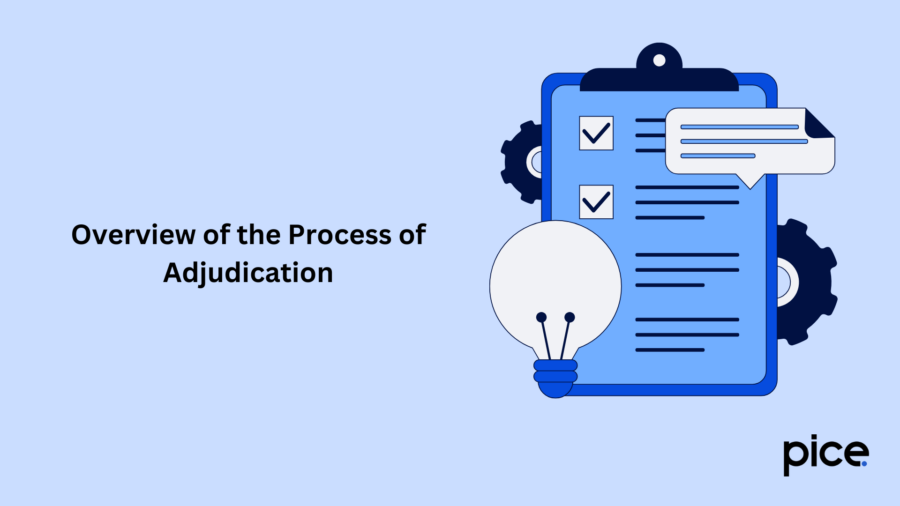
A proper officer can issue a notice under Section 73 or Section 74 with an electronically issued summary, in Form DRC-01. In case there is such a notice issued, the proper officer needs to additionally ensure the issue of statement, mentioning the amount payable for that period in Form DRC-02 after the determination of tax.
Here are the actions that taxpayers and the GST authority need to take if such a notice is issued:
| Section | Tax, Penalty and Interest | Action That the Taxpayer Can Take | Action by Tax Officer |
| Voluntary payment before issue of show cause notice (SCN) | |||
| Under Section 73 | Tax + Interest | You need to notify the department about the payment in Form DRC-03. | The proper officer will issue an acknowledgement intimation if he/she accepts it and will not consider further issues of notice. |
| Under Section 74 | Tax + Penalty at the rate of 15% of tax + Interest | ||
| Payment of dues within 30 days of the issue of the show cause notice | |||
| Under Section 73 | Tax + Interest | You need to inform the concerned department about the payment in form DRC-03. | If the proper officer is satisfied with your reply, he/she will not proceed by issuing an order in Form DRC-05. However, if the authority is dissatisfied, it will issue a notice for a personal hearing. |
| Under Section 74 | Tax + Penalty at the rate of 25% of tax + Interest | ||
| Payment of the outstanding amount after 30 days of SCN issuance, however within the time limit mentioned in SCN | |||
| Under Section 73 | Tax + Penalty at the rate of 10% of tax or ₹10,000 whichever is higher + Interest | You need to reply to the show cause notice in form DRC-06 by submitting relevant supporting documents. | The authority will issue form DRC-05 if it is satisfied and not proceed further. However, in case the proper officer is not satisfied, he/she will send a notice for a personal hearing to the taxpayer. The action depends on the decision of the tax officer. |
| Under Section 74 | Tax + Penalty at the rate of 50% of tax + Interest | ||
Time Limit for Adjudicating the Case Under Sections 73 and 74
The table below illustrates the time limit for adjudicating the case:
| Sections | Time Limit |
| Section 73- Time Limit | 3 years from the due date of filing annual returns for the relevant demand or the date of erroneous refund |
| Section 74- Time Limit | 5 years from the due date of filing the annual return for the concerned demand or the date of incorrect refund |
How to View a Notice on the Official GST Portal?
Here is how you can view a notice on the unified GST portal:
Step 1: Log in to the official GST portal using user credentials.
Step 2: Navigate to the 'Services' tab and select 'User Services'. Then, choose 'View Additional Notices/ Orders' and select 'Case Details'.
Step 3: Go to the 'Attachments; option and click on the download link to view the notice.
How to Reply to a DRC-06 Notice on the GST Portal?
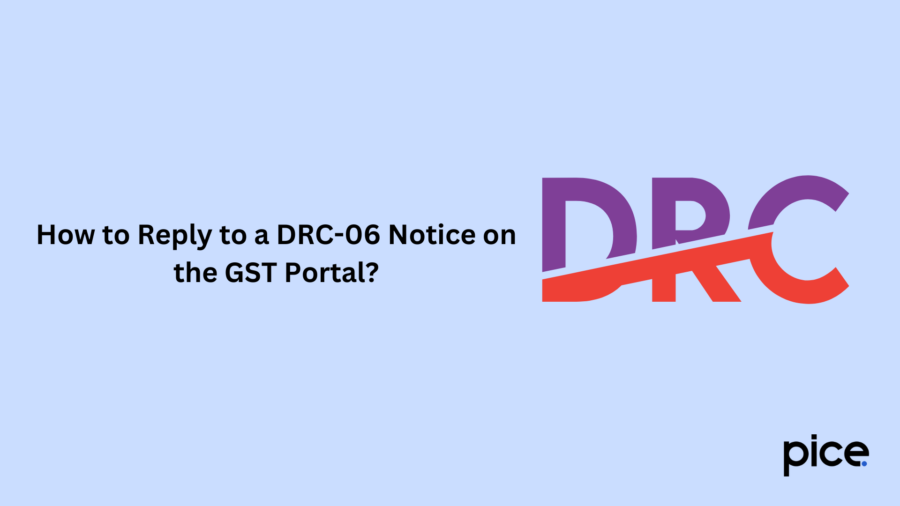
As a taxpayer, you need to reply to notices in the following way:
Step 1: Once you navigate to the Case Details page on the unified GST portal, click on the Replies tab.
Step 2: Go to the 'Add Reply' tab and choose 'Reply'.
Step 3: You will see the status as 'Pending for Reply by Taxpayer'. This status will change once you add your response.
Step 4: The display will show the 'Reply' page.
Step 5: Your reply page will show the following details:
| Fields | Nature |
| SCN reference number | These are auto-populated fields. |
| Date of SCN | |
| Financial Year | |
| Personal hearing requirement | If the notice assessing and issuing authority does not call for a personal hearing in the notice, taxpayers will have access to this section. You need to select ‘Yes’ or ‘No’ as a taxpayer. |
| Reply | Fill in your reply |
| Attachment | Browse and attach relevant supporting documents |
| Verification | You need to click on the check box, place and the authorised signatory's name to verify your reply details. |
Step 6: You can click 'Preview' to check your reply before you click 'File' to proceed.
Step 7: The display will show the 'Submit Application' page. You can submit your application using DSC (digital signature certificate) or EVC (electronic verification code). If you choose DSC, you have to upload the certificate and click 'Sign'. In case you choose EVC, you will receive an OTP in your registered mobile number and Email ID. You have to enter this OTP to validate before you receive the success message with the ARN.
Step 8: The display will redirect you to the 'Notices and Order' page. You can download the filed reply in PDF mode by clicking on the download link before you click 'Ok'.
Step 9: You will be navigated to the 'Case Details' page where you can see the changed reply status. The status of the reply will be updated to 'Reply Furnished, Pending for Order by Tax Official'.
How to View an Order Issued by a Tax Official?
You can follow the steps below to view an order that the tax official issues:
Step 1: Go to the ‘Case Details’ page and select the ‘Orders’ tab.
Step 2: This page displays all the orders issued against the taxpayer.
Step 3: You can view the order by clicking on the link below the attachment.
If you have to view a rectified order, you can follow the same procedure. Notably, a proper officer can rectify an order within 6 months from the date of issuance in form DRC-08.
What Are the Reasons for Initiating Adjudication Proceedings Under Sections 73 and 74?
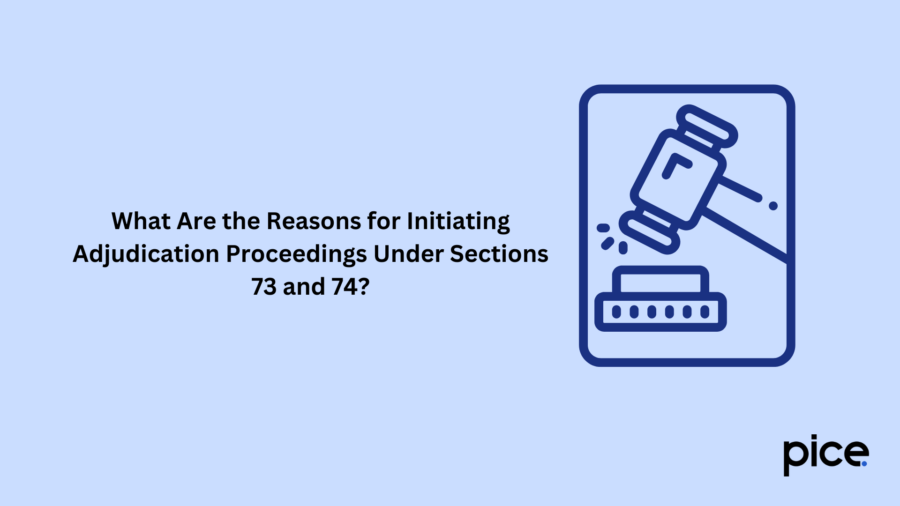
Section 73 and Section 74 include unpaid tax, short payment of tax, erroneously refunded, availed or utilised ITC (input tax credit) willful misstatement or fact suppression. However, it excludes fraudulent activities.
Here are the reasons to initiate adjudication proceedings under Sections 73 and 74:
● If a taxpayer violates the terms and conditions for availing composition scheme
● When the input service distributor (ISD) distributes excess credit or credits that are not permitted in the provisions of the Act
● If a tax deductor defies to comply with the provisions of Section 51 pertaining to TDS
● In case the taxpayer does not comply with notice under Section 61 or if the explanation provided by the taxpayer does not satisfy the proper officer after return scrutiny
● If the Additional/Joint Commissioner withdraws the summary assessment under Section 64 based on application or Suo moto
● When the authority recommends a case based on an Audit under Section 65, a Special Audit under Section 66 and a survey under Section 67
● If there are cases of tax short paid, not paid, erroneously refunded, ITC wrongly utilised or availed
Conclusion
As a taxpayer, you need to reply to the show cause notice issued by a tax officer using form DRC-06 in GST. Ensure you submit your response within 30 days from the date of issuance of the notice. Further, you need to attach relevant supporting documents to validate your claims.
If the proper officer finds your response satisfactory, he will notify the same using the GST portal and resolve the issue.
💡If you want to streamline your payment and make GST payments, consider using the PICE App. Explore the PICE App today and take your business to new heights.
 By
By 











